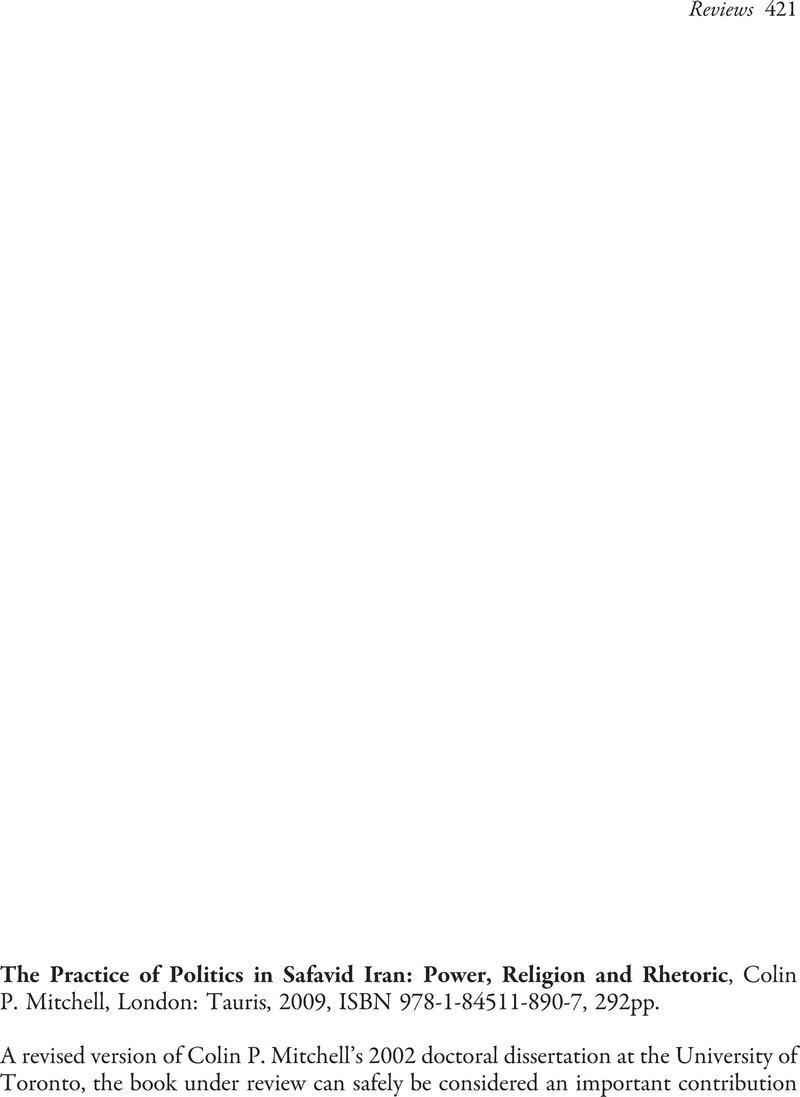No CrossRef data available.
Published online by Cambridge University Press: 01 January 2022

6 Aubin, J., “Šah Isma‘il et les notables de l'Iraq persan (Etudes safavides I.),” Journal of the Economic and Social History of the Orient, 2 (1959): 37–81Google Scholar. For more on the a‘yan/amir system of social hegemony in the middle period of Islamic history, see Hodgson, M. G. S., The Venture of Islam: The History and Conscience in a World Civilization (Chicago, 1974), 2: 64–68, 91–135CrossRefGoogle Scholar.
7 Woods, J. E., The Aqquyunlu: Clan, Confederation, Empire (Salt Lake City, 1999), 102–103Google Scholar.
8 For a recent edition of the divan in Cyrillic characters, see Shah Ismail Khata'i Eserleri, ed. Seferli, E. and Yusifli, Kh. (Baku, 2005)Google Scholar.
9 Safavi, Sam Mirza, Tuhfa-yi sami, ed. Dastgirdi, V. (Tehran, 1936), 9Google Scholar. In its published version, the divan contains some 600 pieces of poetry.
10 Jacobs, A., “Sunni and Shi‘i Perceptions, Boundaries and Affiliations in Late Timurid and Early Safawid Persia: An Examination of Historical and Quasi-Historical Narratives,” PhD thesis, SOAS, University of London, 1999, 90–92, 96, 206Google Scholar.
11 al-Nahrawali, Qutb al-Din Muhammad, Kitab al-i‘lam bi-a‘lam bayt allah al-haram, ed. Wüstenfeld, H. F., Vol. 3 of Akhbar Makka al-musharrafa (Beirut, 1964), 274.Google Scholar
12 Fazli b. Zayn al-‘Abidin Khuzani-Isfahani, Afzal al-tavarikh, MS Or.4678, British Library, London.
13 Mu‘in al-Din Mirza Makhdum Ashraf Sharifi-Shirazi, Kitab al-nawaqid li-bunyan al-rawafid, MS. Or.7991, British Library, London.